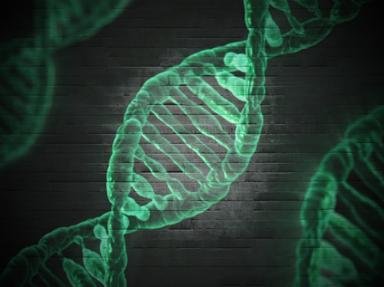Quiz Answer Key and Fun Facts
1. Transcription, or the synthesis of RNA from DNA template, needs to start somewhere. There exist certain segments of DNA that contain the necessary base-pair sequences to initiate RNA synthesis. What are these sites called?
2. RNA synthesis is catalyzed by the large enzyme RNA polymerase, the holoenzyme of which consists of four subunits. Which of the four subunits is responsible for recognition of promoter sites?
3. RNA polymerase needs to unwind and separate the DNA double helix before it can synthesize any RNA. DNA is often supercoiled. What type of supercoil facilitates the unwinding of DNA?
4. What is usually located at the 5' end of a newly synthesized RNA chain?
5. Which subunit of the RNA polymerase holoenzyme is not present during most of elongation?
6. The error rate of RNA synthesis is about the same as the error rate of DNA replication.
7. Although DNA is double-stranded, RNA polymerase only uses one strand to synthesize RNA. What is this strand called?
8. At termination, the RNA-DNA hybrid must separate, a process that is facilitated if the base-pairing between the two strands are weak. Which is the weakest of the four RNA-DNA base pairs?
9. The remaining questions pertain to transcription as it occurs in eukaryotes. Transcription in eukaryotes is similar to, albeit more complex than, the process in prokaryotes. What polymerase is responsible for the synthesis of pre-mRNA in eukaryotes?
10. Just like prokaryotic DNA, eukaryotic DNA contains sequences close to the transcriptional start site that serve as promoters for transcription. These sequences are classified into a certain class of promoter elements. What is the name for this class?
11. A common class of GTPs is the TFII class, which is involved in promoters containing the so-called "TATA box" -25 promoter sequence, a highly conserved sequence found in most eukaryotic cells. Which TFII protein complex is responsible for binding to the TATA box?
12. TBP binds to the major-groove side of DNA.
13. The transcription factor TFIIH has which of the following activities?
I. kinase
II. isomerase
III. helicase
14. Which of the TFII transcription factors is most closely related to the sigma subunit of the RNA polymerase holoenzyme in prokaryotes?
15. In addition to core promoters like the TATA box that are located near the transcription start site, eukaryotic chromosomes also contain what are called regulatory or activation sequences (enhancers) farther away from the transcription start site that help initiate transcription. True or false: these enhancers can be located more than 1 million base pairs apart from the transcriptional start site.
Source: Author
aznricepuff
This quiz was reviewed by FunTrivia editor
crisw before going online.
Any errors found in FunTrivia content are routinely corrected through our feedback system.

